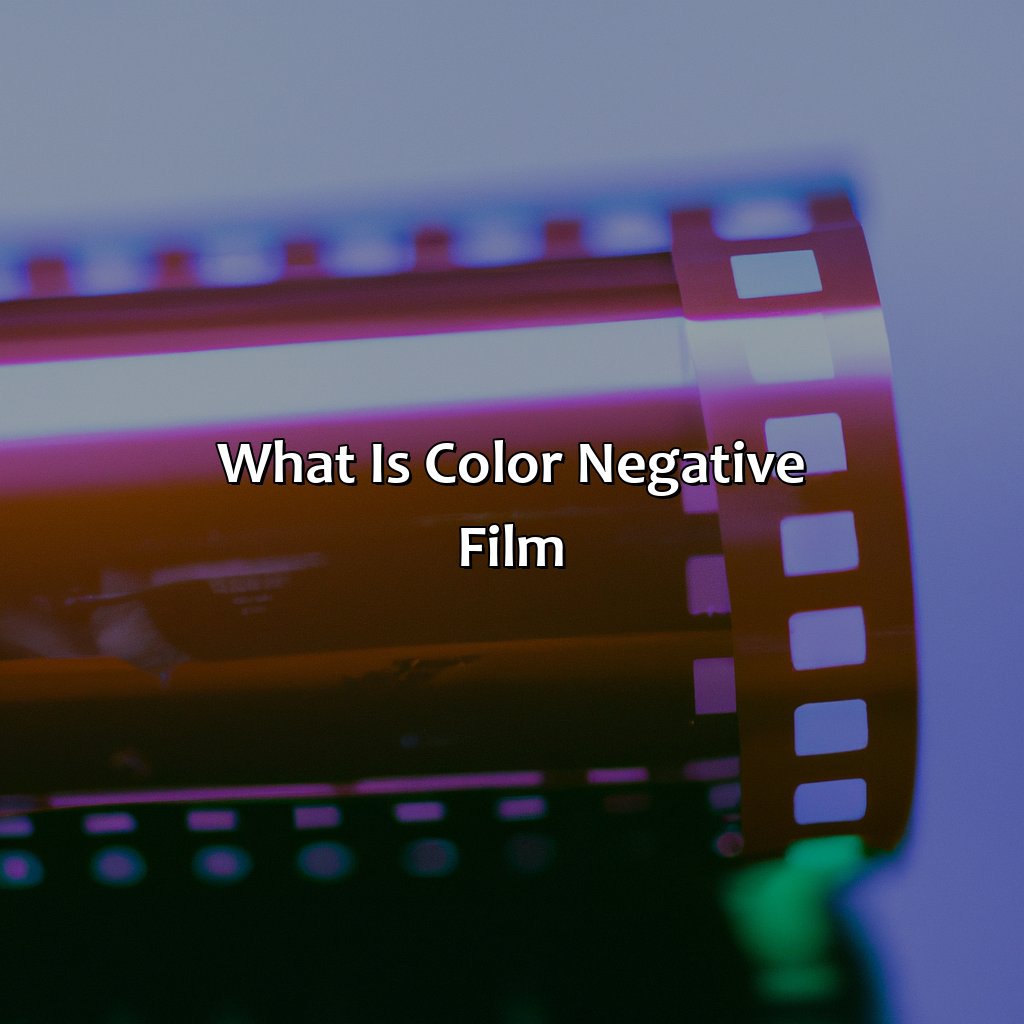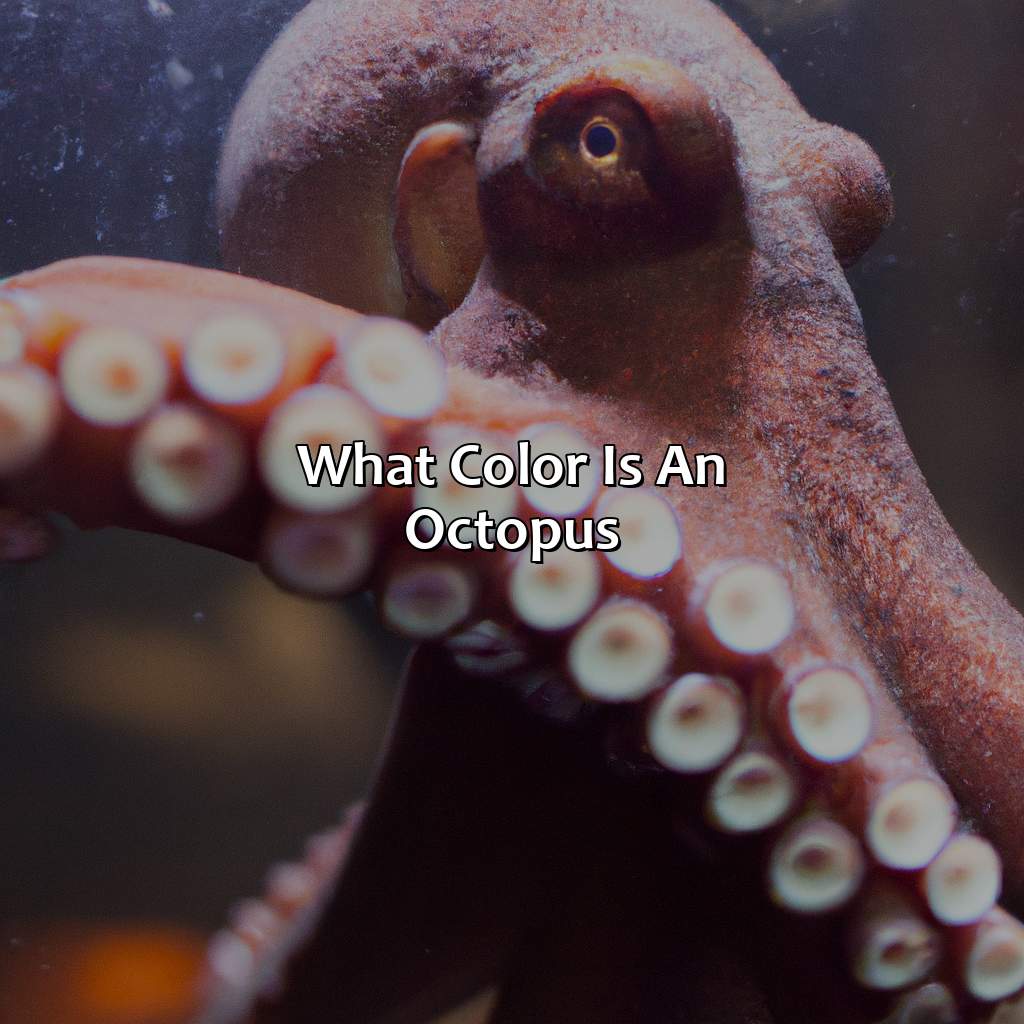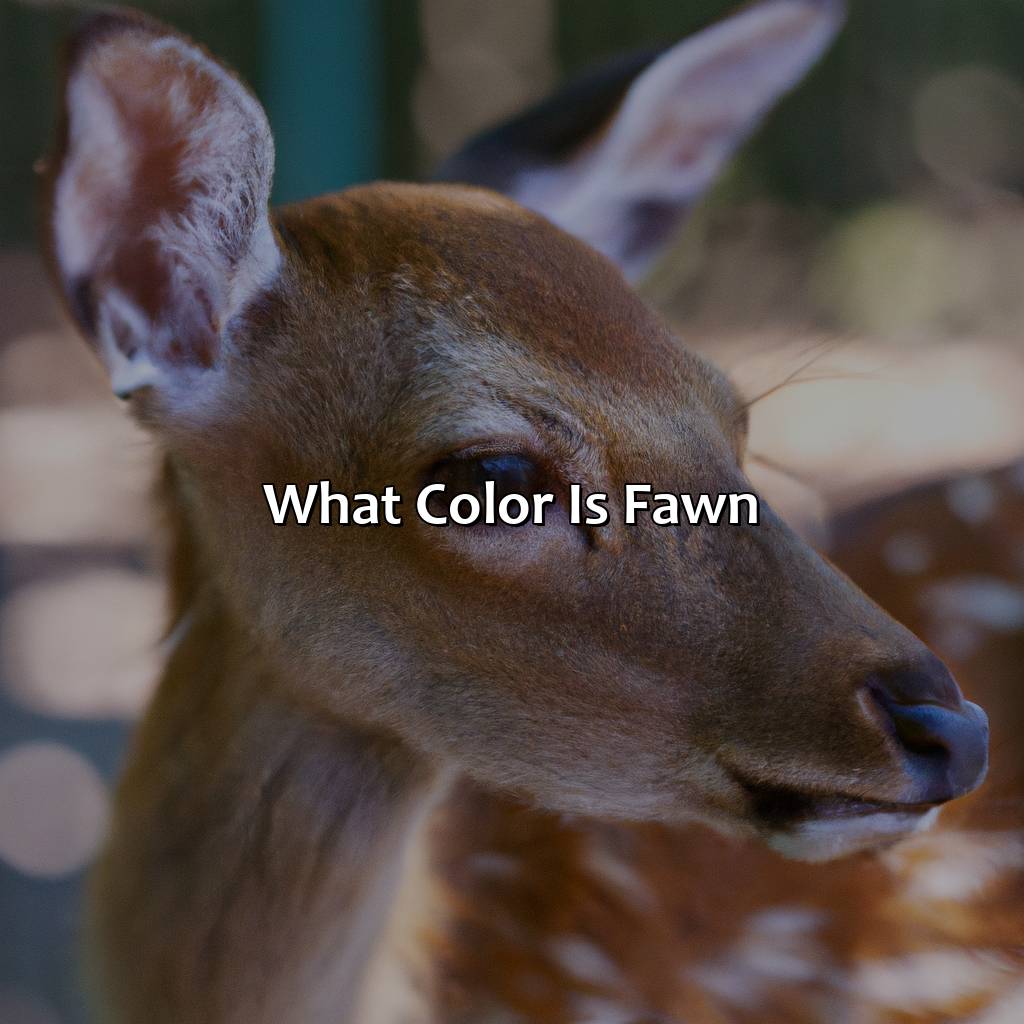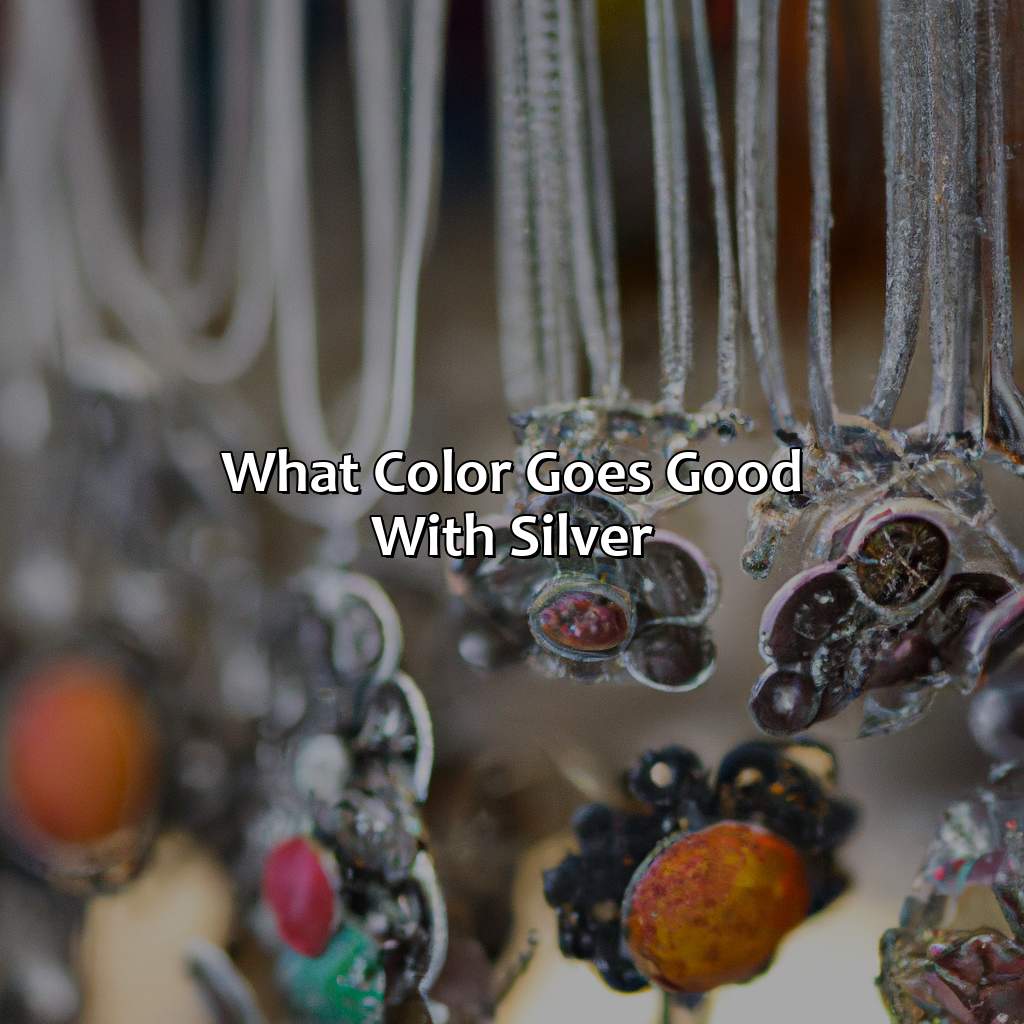Key Takeaways:
- Color negative film is a type of film stock used in film photography that produces a negative image. It is commonly used in both medium format and 35mm film cameras, and is known for its unique film grain texture and aesthetic.
- Color negative film works by using a light-sensitive emulsion layer that captures light and creates a negative image. This negative image is then used to produce a positive image in the film processing stage, where the colors are reversed and corrected. This process involves exposing the film to specific amounts of light, developing the film with chemicals, and printing the image onto paper.
- Using color negative film offers several benefits, including unique film grain, increased control over color grading and final image look, and the ability to produce high-quality prints. However, it also has some drawbacks, including limited dynamic range and reduced color accuracy compared to digital photography.
Understanding Color Negative Film
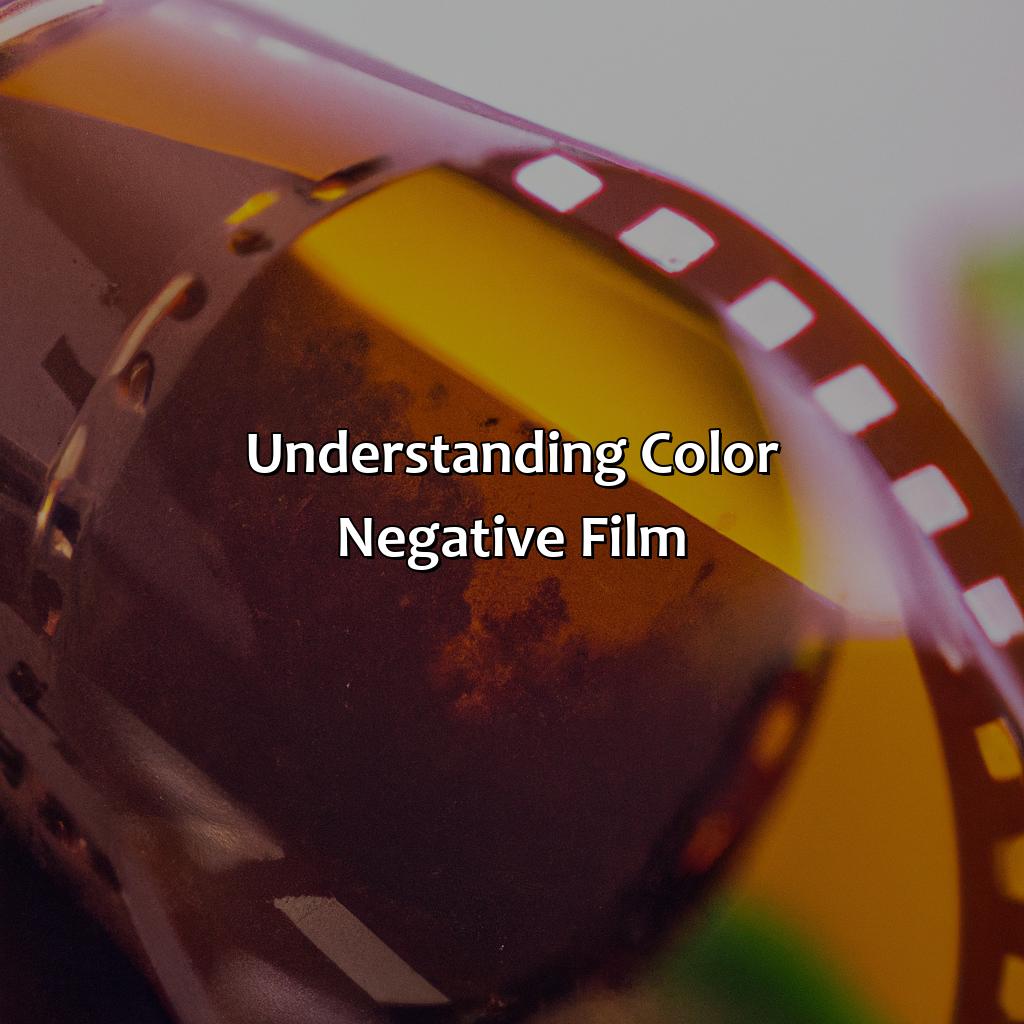
Photo Credits: colorscombo.com by Bobby Martinez
You need to know about the different factors which affect image quality in order to understand color negative film. Mastering film emulsion, grain, exposure, processing and color grading is necessary to comprehend it properly.
This guide is divided into four sections. They are:
- What is Color Negative Film?
- How Does it Work?
- Types of Color Negative Film
- Benefits of Using Color Negative Film
These will help you understand it better.
What is Color Negative Film?
Color negative film is a type of film stock that is commonly used in the photography industry. It is a variant of photographic film that produces color images by absorbing different types of light waves, and then alters each one into its opposite color. Film format may vary widely – it may be as small as “35mm” or as big as “medium format.”
With color negative film, the developed image produces colors that are inverted from what we see in real life. Colors like blue appear orange on negative films and vice versa. They allow us to capture fine details even in darker scenes due to their higher latitude range.
Color negative films come in various types, but ultimately each of them comes with disadvantages and advantages over one another. For instance, some films are better suited for outdoor shoots while others excel indoors, depending on factors such as sensitivity to light and accuracy of skin tones.
One unique feature of color negative film is its ability to produce high-quality prints that retain natural colors compared to other photographic methods like positive films which do not give you much control over color adjustments during printing.
Although digital photography has emerged as a dominant force, many photographers still find value in using traditional methods like color negative films. These photographers appreciate the nostalgic appeal and unpredictability factor that come with using them due to slight variations between batches and manufacturers.
In my personal experience shooting with 35mm and medium format negative films have instilled the value of taking time to compose shots carefully since every frame counts considering there’s only so many frames you can click before running out of film! Color negative film is like a chameleon, adapting to capture hues and tones with its complex film emulsion and processing.
How Color Negative Film Works?
The film emulsion used in color negative film contains three layers of light-sensitive silver halide crystals. These crystals are then coated with dye-couplers which work together to create the final image. During the development process, the developer reacts with the exposed silver halide crystals to create metallic silver. The unexposed silver halide is then removed and replaced by dye from the couplers, creating a negative image that can be printed to produce positive images.
Color negative film works on a complex process where each layer plays an integral role in capturing color. The top layer contains blue-sensitive emulsion while the middle layer contains green-sensitive emulsion, and the bottom layer contains red-sensitive emulsion. Multiple layers of dye blocking compounds ensure accurate colors are captured without bleeding into other layers.
It’s important to understand that not all color negative films are created equal, and some types specialize in certain situations like portrait or landscape photography. When choosing a type of film, consider factors such as sensitivity, grain size, contrast levels, and saturation.
Don’t miss out on experiencing the unique qualities of color negative film by trying it out for yourself! Experimenting with different types of film and understanding different processing techniques will help you achieve your desired results. Capture stunning images that have a timeless and classic feel with this traditional technique.
Choosing the right color negative film is like picking the perfect wine for a meal – it all depends on your taste, the occasion, and the budget.
Types of Color Negative Film
Color Negative Film Variations
There are several variants of color negative film stock available in the market.
In terms of film format, there are two significant types: medium format and 35mm film, each with its pros and cons. Medium format is characterized by a larger surface area, providing a much more substantial dynamic range, greater detail and higher resolution than 35mm, making it an excellent choice for studio portraits and landscape photography. However, due to its large size, medium format cameras can be heavy and bulky, leading to issues while traveling or shooting street scenes. On the other hand, 35mm film is compact and lightweight, making it ideal for on-the-go photographers.
For beginners looking for an affordable option in the market, amateur-level films like Kodak ColorPlus 200 or Fujicolor C200 offer decent results without breaking the bank. For professional photographers looking for higher quality images with greater flexibility in post-processing options, higher-end films like Kodak Portra or Fujicolor Pro provide unmatched tonal accuracy and sharpness.
| Type of Film | Format | Suitable For | Example Brands |
|---|---|---|---|
| Color Negative | Medium Format | Studio Photography | Kodak Portra |
| Landscape Photography | Fujicolor Pro | ||
| Portraiture | |||
| ——————-+—————–+———————+——————– | |||
| 35mm Film | On-The-Go Photography | Kodak Ultramax | |
| Street Scenes | Wow Colored Films | ||
It’s important to note that different brands will have variations within their respective films’ temperature bias; some produce slightly cool tones while others tend towards warmer tones. Before shooting, it’s essential to understand the characteristics of the film and how it will interact with specific light conditions.
A professional photographer familiar with film stocks shares that even though digital photography offers endless possibilities in terms of post-processing, there’s something unique about creating an image from a film camera. Shooting on color negative films gives you the ability to create images with a more organic look. The trick is to embrace imperfection while working around it and experimenting to push creative boundaries as much as possible.
Say goodbye to digital perfection and embrace the grainy charm of color negative film for a vintage, nostalgic look in your photos.
Benefits of Using Color Negative Film
Using Color Negative Film: Advantages Explained
Color negative film is a popular film stock used in the world of film photography. It is famous for its versatility and ease of use, making it an excellent option for amateur and professional photographers alike. Here are some advantages of using color negative film:
- Wide exposure latitude: One of the significant benefits of using color negative film is its wide exposure latitude. It allows photographers to shoot under a range of lighting conditions without worrying about overexposure or underexposure.
- Better detail retention: When compared to digital images, color negative film has better detail retention. This results in more natural-looking images with greater depth and texture.
- Film grain: The unique look of the film grain adds character to images taken with color negative film. It creates an organic feel that’s hard to replicate digitally.
- Easy to develop: With labs focused on developing color negatives being readily available, developing your films’ straightforward process becomes easy.
- Affordable: Compared to other types of films, color negative films are relatively affordable options when it comes to buying rolls or boxes of them in bulk or singularly.
- Experience and learning opportunity: Using color negative film is an excellent learning experience. When done correctly, it can help improve photographic skills and understanding camera exposure as well as photo processing workflow.
Some other details worth mentioning include exploring various types like Portra, Fuji 400H; how you also need less light than expected as they are more sensitive; best cameras for use include Canon AE1 or Nikon FM; a tip shared by many experienced photographers suggest over-exposing slightly when shooting with Negative Films.
Pro Tip: Experiment and learn experience await those who attempt using different kinds and camera settings while identifying what suits them best personally. Positive film may be positive, but negative film knows how to have fun with colors and textures.
Comparison between Color Negative Film and Positive Film
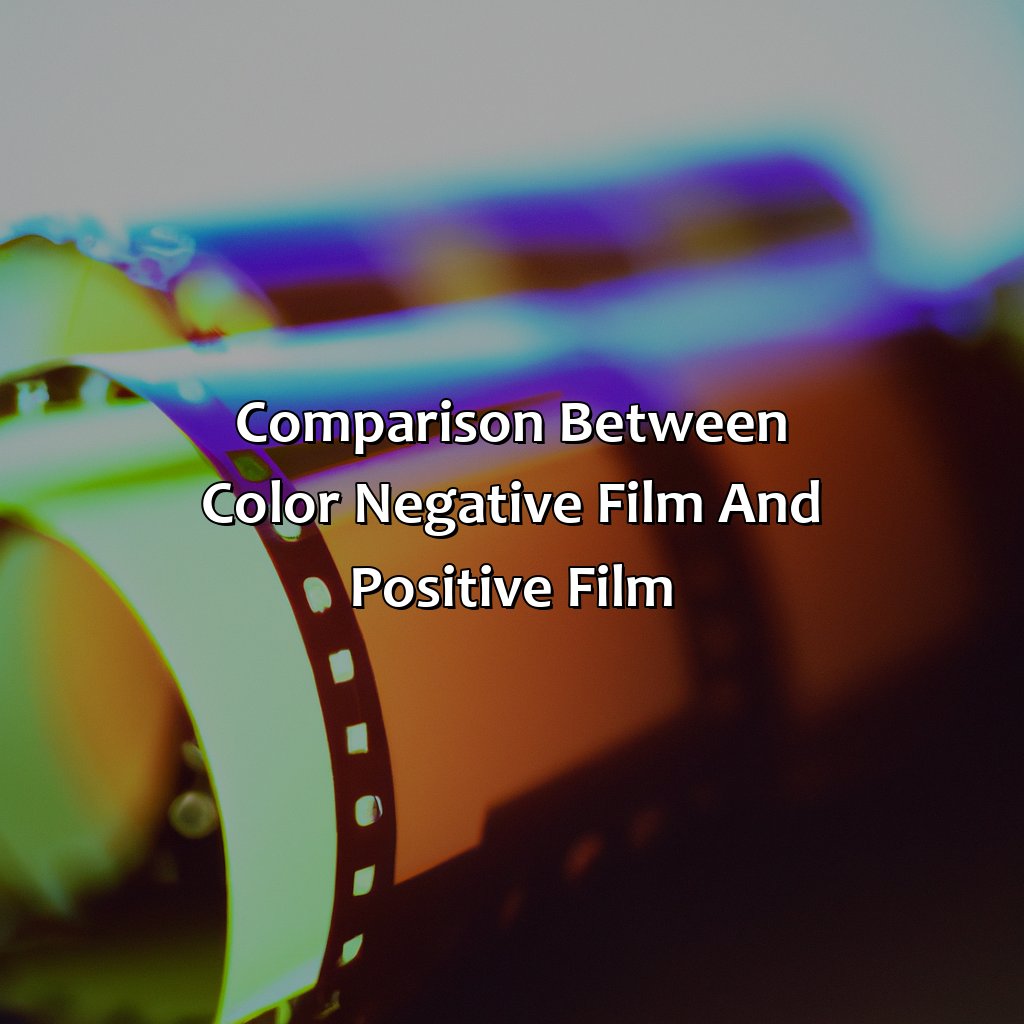
Photo Credits: colorscombo.com by Mark Robinson
Compare color negative to positive film photography? Look here! This will explain the difference between these two types of film. We’ll explore film stock, format, and camera gear. Plus, you’ll learn the pros and cons of each type. Factors include film grain, image quality, and tonal range.
Differences between Color Negative Film and Positive Film
Color film stocks can be classified into two categories: negative and positive. Despite both being used for capturing images in color, they have distinct differences, and understanding their unique characteristics is crucial in determining the best film stock for a given situation.
The table below shows the key differences between color negative film and positive film.
| Category of Film Stock | Color Negative Film | Positive Color Reversal Films |
| Purpose | Achieve a final print or produce digital files. | Create a slide/transparency that can be projected or viewed directly using a lightbox or loupe. |
| Tonal Range & Contrast | A wide latitude which captures more detail in highlights, shadows and allows for adjustments during post-processing. The grain is typically finer than positive films. | The tonal range is narrow; this produces high contrast positives with vibrant hues. Fine-grained versions have been developed recently but are still grainier than negatives. |
| Kodak Portra 400 v Kodak Ektachrome E100G: | Differentiating between two different shades of green is easier to do with color negative film than it is with some ‘positive’ films. | Kodak Ektachrome daylight-balanced color transparency film for motion picture cameras was first introduced in November of 1946 before photography became popularized as well! |
| Dynamic Range | Able to capture a wide range of colors, particularly in the darker areas of images with a longer exposure time. | The dynamic range is narrower with less capability to retain detail in shadows and highlights. |
| Film Formats | Made for different film formats including 35mm and medium format. | Mainly available for still photography but also available for motion picture applications, especially professional video camera reviews. |
| Sensitivity & ISO Range | Slower films offer better quality and finer grain. Faster speeds are necessary for low-light conditions or those that require action-stopping capabilities. | Faster films offer brighter colors but may display more visible grain or noise at higher ISO levels. |
Color negative film has a much wider latitude and can capture more detail in both bright and dark areas of an image than positive film. Kodak Portra 400 has exceptional color reproduction, allowing photographers to differentiate between green hues more reliably than some positive films. Positive film was typically used in situations where it was essential to produce slides directly from the developed negatives, whereas negative films were predominantly used for making final prints or digital copies.
A famous story shared by professional photographers describes how they used color negative film during an early morning shoot where the light was bleak and continuously changing. The photographer had to keep adjusting aperture settings frequently while taking shots; however, using a negative film stock allowed her to recover details lost due to incorrect adjustments when post-processing the images.
In summary, color negative film and positive film have distinct differences regarding their purpose, tonal range, dynamic range, sensitivity & ISO range and the film formats they come in. It is essential to choose the appropriate film stock for a specific situation based on these characteristics. Positive film may give sharper details, but nothing beats the vintage feel and texture of color negative film.
Pros and Cons of Color Negative Film and Positive Film
Color negative film and positive film are two different types of film stock used in film photography. Let’s explore the advantages and disadvantages of each to help you decide which may suit your needs best.
To understand this comparison, let’s take a look at the table below:
| Pros of Color Negative Film | Cons of Color Negative Film | Pros of Positive Film | Cons of Positive Film |
|---|---|---|---|
| Greater exposure latitude | Colors are not accurate | Accurate colors | Less exposure latitude |
| Cheaper to process | Grainier than positive film | Richer contrast | Expensive to process |
| Easier to scan | May lack some definition | More even skin tones | Limited print options |
It is important to note that these pros and cons can vary depending on the specific type and brand of film being used, as well as personal preferences.
One unique factor to consider is how each type handles grain. Color negative films tend to have larger and more noticeable grain than positive films, which may be preferred for some styles or aesthetics.
When shooting with either type of film, it is essential to carefully consider exposure settings for optimal results. Developing color negative film involves additional steps compared to positive films but may be a more cost-effective option in the long run.
Overall, choosing between color negative and positive film will depend on individual preferences and shooting style.
For those new to film photography or unsure which type of film may work best for their needs, it may be worth exploring different options through trial-and-error or seeking advice from experienced photographers or local labs.
Don’t miss out on exploring the unique textures and tones that analog photography has to offer by considering both color negative and positive films in your photography gear collection.
Get ready to stock up on color negative film and elevate your analog photography game with these essential buying and shooting tips.
Buying and Using Color Negative Film
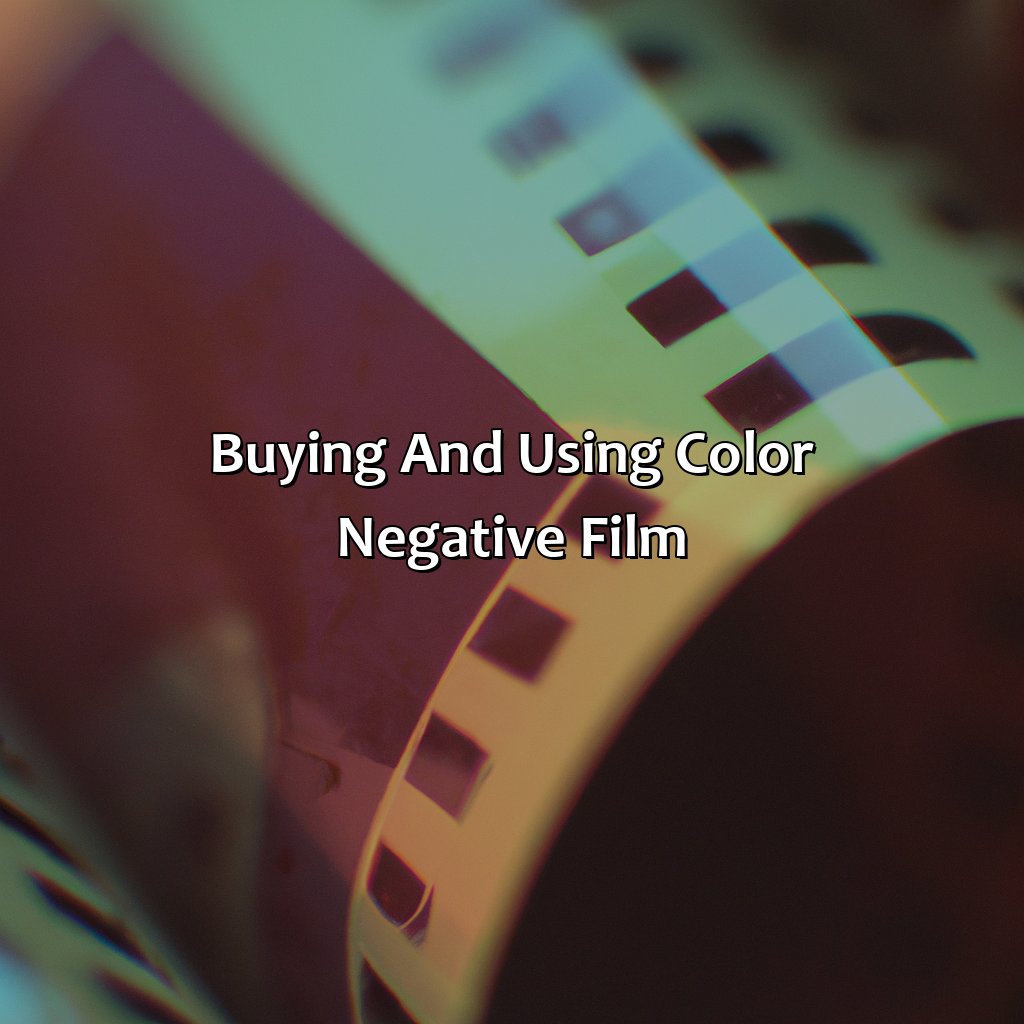
Photo Credits: colorscombo.com by Albert Torres
Want to use color negative film successfully? Finding the right one for your needs is key. You’ll need professional photography skills too.
Developing color negative film is a process – film lab, darkroom, exposure, scanning, preservation. Learn about these sub-sections and experience a unique creative process for visual art!
Choosing the right Color Negative Film
To ensure the best outcome when working with color negative film, it’s important to select the right film stock. Here are some tips on how to choose the perfect film format for your project.
| Film Type | Description |
| 35mm Film | Most common type of film used and is generally less expensive. |
| Medium Format Film | Larger size allows for higher resolution images and greater detail. |
Consider your budget, style of shooting, intended use, and desired final result when selecting a film format. Keep in mind that different film stocks produce unique colors and tones, which can influence the mood of your images.
When choosing a color negative film, it’s also important to note its ISO rating (film sensitivity). Higher ISO rating means faster shutter speed but can lead to grainier images. Take into consideration the lighting conditions you’ll be shooting in as well.
Historically, color negative films were developed as a response to advancements in positive transparency films. Manufacturers wanted more control over producing prints while also decreasing production costs. This led to color negative films becoming one of the most popular forms of photography gear amongst professionals and beginners alike.
Take your color negative film for a spin and indulge in the mesmerizing medley of tones and contrasts it produces.
Shooting with Color Negative Film
Capturing stunning photographs with color negative film is an art that requires some tips. To get the best results, it is essential to understand the right technique for shooting with color negative film. Shooting with Color Negative Film requires a nuanced approach highlighting its distinctive features.
-
It’s crucial to determine the type of film stock that you will use based on the lighting and other external factors. Choosing the right ISO is also crucial as it determines how sensitive the film is going to be. The recommended options are medium format (120mm) or 35mm for high-quality photographs.
-
Gaining knowledge about different types of cameras can enhance your experience with color negative films. Film cameras for beginners may not always have mechanics that work well with all types of films. Professional film cameras, however, offer additional features such as manual focus and aperture controls, allowing full control over ISO settings.
Moreover, one needs proper gear and equipment to capture images as per their intent. It includes considerations like lighting specs, perspective angles and compositing techniques.
In case you are stuck while composing images or having difficulty deciding your photographic style then it is advisable to seek inspiration from professionals who specialize in various genres like retro photography, photojournalism, fine art photography, street photography, portrait photography among others.
It’s needless to say that being aware of developing processes can save you some trouble in post-production work by ensuring accurate recordings of each image captured.
To unlock the power of Color Negative Film photography and perfect your craft in any genre- travel photography/ fashion photography/ wildlife photography/ under-water photography among myriad others–it’s pertinent that one does not miss out experimenting different compositions under varied environmental conditions using the correct hardware & software combinations!
Developing color negative film is like a science experiment in a darkroom – with the right mix of chemicals and photography skills, you can bring your film to life.
Developing Color Negative Film
Developing Color Negative Film:
After shooting on color negative film, the film must undergo developing to bring out the images captured by the film stock. Developing color negative films involve several steps and requires photography skills and attention to detail.
5-Step Guide for Film Developing Process:
- Film Chemicals: Gather all necessary film-developing chemicals for use in a darkroom environment.
- Prepare Darkroom: Set up a space free of any light leaks with running water access, chemical storage, and a temperature-controlled environment.
- Develop Film: Use a developing tank to develop your film with proper agitation techniques while following specific development times based on the type of color negative film used.
- Stop Bath: End the development process with a stop bath solution to halt further development.
- Fixer Solution: Finish by using a fixer solution to completely remove all unexposed silver halides from the emulsion layer.
Details that have not been covered:
To maintain consistency in colors of final prints from various films, color correction may be necessary after completing the development process. Many labs offer photo processing services that include scanning, transfer, digitization, or preservation according to preference.
Call-to-Action:
Investing time in learning how to develop your own color negative films may seem daunting but can significantly improve photography skills and provide creative control over every aspect of image-making. Develop your own films today and experience the fear of missing out on creating stunning images using this classic medium format!
Color negative film may be old school, but it’s still a vital tool in the creative photography arsenal for those who appreciate the timeless aesthetics of film art and the history of visual art.
Final Thoughts and Tips
Final Takeaways and Advice
As we conclude our discussion on color negative film, it’s clear that this medium has remained a popular choice for many photographers. One of the reasons for this is its unique properties, including its texture and tones, which offer a distinctive look that can’t be replicated digitally. If you’re new to film photography, consider investing in a film camera and experiment with different film stocks to find your favorite.
To get the best results with color negative film, it’s important to pay attention to your exposure settings. Overexposing by one or two stops can help bring out the best in your shots and minimize graininess. Don’t forget to also factor in the lighting conditions when choosing a suitable ISO speed for your film stock.
When developing your color negatives, don’t hesitate to work with a professional lab that specializes in film processing. This ensures consistent quality control and you can depend on their expertise to produce accurate colors and contrast levels.
Additionally, if you have the means and interest, consider building a darkroom to print your own photos onto paper using an enlarger. It may seem daunting at first but learning how to develop prints by hand adds another layer of creative control over the final result.
In summary, experimenting with color negative film offers endless possibilities for artistic expression within the realm of analog photography. Whether you prefer bright and vibrant hues or moody sepia tones, there is a film stock out there that can help bring your vision to life. So go ahead and explore this exciting medium – you might be surprised by what you discover!
Jumping into the world of color negative film photography? Keep calm and embrace the magic of film exposure, developing, and processing with patience and creativity.
Recommendations for beginners
For those new to the world of film photography and are interested in exploring color negative film, here are some helpful recommendations:
- Invest in high-quality photography gear: To achieve excellent results, build your photography kit with high-quality equipment such as a film camera, which has robust controls and settings for exposure.
- Get familiar with film shooting basics: Gain knowledge about metering light, understanding ISO sensitivity and selecting the right shutter speed and aperture settings. Practice shooting on different lighting conditions to understand the nuances of using Color Negative Film.
- Find a reliable lab or darkroom for developing and processing: Developing film requires attention to detail, so it’s important to find a skilled lab or darkroom that can handle this work. Some labs have scanning services with great quality options for digital image preservation.
To add more value, research online tutorials on YouTube or photo forums that offer insights into visual art aspects such as composition, frame storytelling techniques or technical details such as image quality, film texture, contrast and tones.
Pro Tip: Keep learning through experimentation. Try different methods of taking shots by challenging yourself with changes in lighting environments or creating concepts to shoot at night times for a better feel on some specific scenes that you like; interactions will help refine your technique over time.
Future of Color Negative Film
The Evolution of Color Negative Film
As we witness the rapid evolution of digital photography, the future of color negative film has been a topic of discussion for many visual artists. Despite being one of the oldest forms of photography, color negative film still remains an important medium for film photographers who are passionate about film aesthetics and creative photography.
Looking back at film history, color negative film has gone through tremendous changes in technology and design to adapt to the changing times. From early experiments with three-strip Technicolor in 1932 to modern-day advancements in emulsion technology, color negative film has proved to be an enduring and fascinating part of film art.
In recent times, the advent of digital technology has certainly taken over traditional photography methods. However, there is something visually stunning about the unique qualities that analog techniques offer with its soft tonal range and warm colors that digital photography struggles to imitate.
Despite concerns about the fading interest in traditional films like color negative films due to advancements in digital technology, there is currently a revival in interest amongst a new generation of creatives discovering or rediscovering this almost century-old photographic technique. The emergence of hybrid methods that fuse both analog and digital elements have also widened opportunities for creative experimentation within contemporary film art.
One such example is using color negative films as part of mixed media experimentation where filmmakers combine various lab processes with photographic images. This process produces visually arresting results by bringing out unique features from each material, effectively marrying different visual mediums.
Five Facts About Color Negative Film:
- ✅ Color negative film is a photographic film that captures colors in their opposite hues, creating a negative image. (Source: The Darkroom)
- ✅ Color negative film is the most commonly used film for commercial and consumer photography. (Source: B&H Photo Video)
- ✅ Color negative film features a wide exposure latitude, meaning it can capture a range of brightness levels without losing detail. (Source: Kodak)
- ✅ Color negative film is often used in portraiture and fashion photography due to its ability to produce a natural skin tone. (Source: PetaPixel)
- ✅ Color negative film can be developed and printed in a traditional darkroom or scanned and printed digitally. (Source: The Spruce Crafts)
FAQs about What Is Color Negative Film
What is color negative film?
Color negative film is a type of film used in photography that produces a negative image, which is then used to make prints with a positive image. This type of film is typically used for outdoor or indoor photography and is designed to capture a wide range of colors and tones.
How does color negative film work?
Color negative film uses a chemical process to produce a negative image of the subject being photographed. The film consists of three layers of light-sensitive emulsion that contain different dyes that respond to red, blue, and green light. When the film is exposed to light, the emulsion forms a latent image that is then developed into a visible negative image using a combination of chemical processes.
What are the benefits of using color negative film?
Some benefits of using color negative film include its ability to capture a wide range of colors and tones, its forgiving nature when it comes to exposure and color balance, and its ability to produce high-quality prints with good detail and sharpness. Additionally, color negative film tends to have a longer shelf life than digital files, making it a reliable backup for your images.
What are some common uses for color negative film?
Color negative film is commonly used for outdoor or indoor photography, such as landscapes, portraits, and events. It is also often used in commercial photography, such as fashion and advertising, due to its ability to accurately capture color and detail.
What should I consider when choosing color negative film?
When choosing color negative film, it’s important to consider factors such as speed, grain, color accuracy, and contrast. Different films will have different characteristics, so it’s important to choose one that is well-suited to your particular needs and preferences.
How do I develop color negative film?
Developing color negative film requires specialized equipment and chemicals, and should be done carefully to ensure the best results. If you’re new to developing film, it may be best to seek out the assistance of a professional lab or experienced photographer to help you get started. However, with the right resources and guidance, developing color negative film can be a rewarding and creative process.
